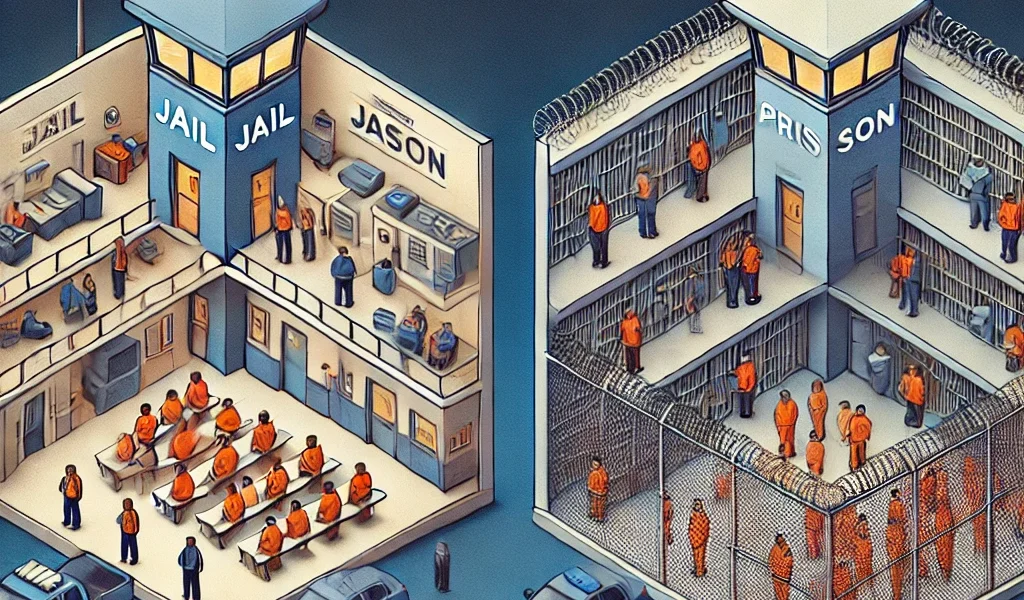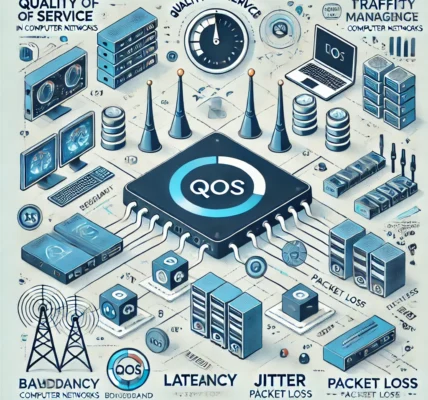What is the Difference Between Jail and Prison? – A Detailed Explanation
What is the Difference Between Jail and Prison? – A Detailed Explanation
When discussing criminal justice and the correctional system, the terms jail and prison are often used interchangeably. However, they represent two distinct types of correctional facilities, each serving different purposes within the legal system. Understanding the difference between jail and prison is crucial for comprehending the structure of criminal punishment and rehabilitation in many countries, including the United States.
This article will explore the key differences between jail and prison, their roles, who is typically housed in each, and how they operate within the justice system.
Definition and Purpose of Jail
Jail is a short-term detention facility typically operated by local governments, such as counties or municipalities. The primary purpose of jails is to hold individuals for a temporary period, either awaiting trial or sentencing, or serving short sentences (usually less than one year).
Key Characteristics of Jail:
- Short-Term Detention: Jails are designed to hold individuals for brief periods. Many inmates in jail are awaiting trial or sentencing and have not been convicted of a crime yet. Others may be serving sentences for minor offenses, such as misdemeanors.
- Operated by Local Governments: Jails are typically run by county sheriffs or municipal law enforcement agencies. Because they serve local communities, jails are generally smaller and less secure than prisons.
- Inmates Awaiting Trial: A large portion of people held in jail are awaiting court proceedings. These individuals are often accused of non-violent crimes or are being held because they cannot post bail.
- Temporary Holding for Various Reasons: Aside from housing those awaiting trial, jails also hold individuals who are:
- Arrested for minor crimes.
- Serving short sentences for misdemeanors.
- Awaiting transfer to prison after being sentenced for more serious crimes.
- Rehabilitation Programs: Jails often have limited resources for rehabilitation or long-term programs, as inmates typically spend short periods there. However, some jails offer basic programs like substance abuse treatment or educational workshops.
Definition and Purpose of Prison
Prison is a long-term correctional facility that holds individuals convicted of serious crimes. Prisons are managed at the state or federal level and house individuals who are serving longer sentences, typically for felonies.
Key Characteristics of Prison:
- Long-Term Incarceration: Prisons are designed to hold inmates serving sentences longer than one year. These sentences are usually for more serious offenses, such as violent crimes, drug trafficking, or major theft.
- State or Federal Operation: Prisons are operated by state governments (for state crimes) or the federal government (for federal crimes). State prisons house inmates convicted under state law, while federal prisons hold those convicted of federal offenses.
- More Secure Facilities: Prisons are equipped to house dangerous or high-risk individuals, with higher levels of security. There are different security levels within prisons, such as minimum, medium, and maximum security, depending on the nature of the inmate’s crime and their risk to society.
- Inmate Population: Prisons hold individuals who have been convicted of felonies, including violent crimes like murder, assault, and armed robbery, as well as serious non-violent offenses such as large-scale fraud or drug trafficking.
- Rehabilitation and Reentry Programs: Prisons often have more extensive rehabilitation programs compared to jails. These programs may include educational opportunities, vocational training, counseling, and substance abuse treatment, all aimed at reducing recidivism and preparing inmates for reintegration into society after their release.
Key Differences Between Jail and Prison
1. Length of Stay
- Jail: Typically houses individuals for short periods, usually less than one year. Many inmates are awaiting trial, sentencing, or transfer to a prison.
- Prison: Holds individuals serving longer sentences, usually more than one year, after being convicted of serious crimes.
2. Types of Offenders
- Jail: Primarily holds individuals accused of misdemeanors or those awaiting trial. These offenders may be serving time for minor crimes like petty theft or disorderly conduct.
- Prison: Houses individuals convicted of felonies and serious crimes, such as violent offenses or large-scale criminal activities.
3. Management and Jurisdiction
- Jail: Operated by local governments (e.g., county or city). Managed by local law enforcement agencies, such as sheriffs’ departments.
- Prison: Managed by state or federal governments, with state prisons for state-level offenses and federal prisons for violations of federal law.
4. Security Levels
- Jail: Generally has lower security measures because it houses individuals for short-term stays or those awaiting trial.
- Prison: Prisons have different security levels—minimum, medium, and maximum—to manage various inmate populations, from low-risk offenders to violent criminals.
5. Rehabilitation Programs
- Jail: Offers limited rehabilitation programs due to the short duration of inmate stays. Focus is often on temporary holding rather than long-term rehabilitation.
- Prison: Prisons provide a wide range of rehabilitation and vocational programs, aiming to prepare inmates for eventual release. These include educational programs, work opportunities, and therapy.
Overlaps and Exceptions
While jails and prisons have distinct roles, there are some areas where their functions overlap:
- Pretrial Detention: Both jails and prisons can house individuals who are awaiting trial, though this is more common in jails.
- Transfers: In some cases, inmates may be transferred between jails and prisons, depending on their sentencing, behavior, or need for special programs.
Additionally, some states have hybrid facilities that combine elements of both jails and prisons to manage diverse populations, especially in areas with fewer resources.
Conclusion
Although jail and prison serve the broader purpose of detaining individuals within the criminal justice system, their functions, populations, and management differ significantly. Jails focus on short-term detention, primarily for those awaiting trial or serving sentences for minor crimes, while prisons are designed for long-term incarceration of individuals convicted of more serious offenses. Understanding these differences is key to navigating discussions about criminal justice, incarceration, and rehabilitation.
As local, state, and federal governments continue to evolve their correctional policies, recognizing the distinct roles of jails and prisons will remain crucial in ensuring the fair and effective administration of justice.




